What the Ladies were Reading That Other Time America was Great Again.
Let's have a look at "True Confessions" and "Ladies Home Journal"1960..
Let’s start with this full page ad from The Ladies Home Journal for Kotex menstrual pads, one of the most popular products in the menstrual market of the 1960’s.
Here we see three good-natured women who, despite coping with their periods, still somehow managed to get themselves invited along on a day of man sailing! So, how (you may ask) did they wrangle this exclusive invite to break free from household chores and share a day of sunshine, and wind in the manosphere? Could it possibly have had anything to do with agreeing to do all the mopping?
I didn’t really read ‘The Ladies Home Journal’ at any point in my life because here is what the ladies of ‘The Ladies Home Journal’ mostly looked like in this 1960 issue.
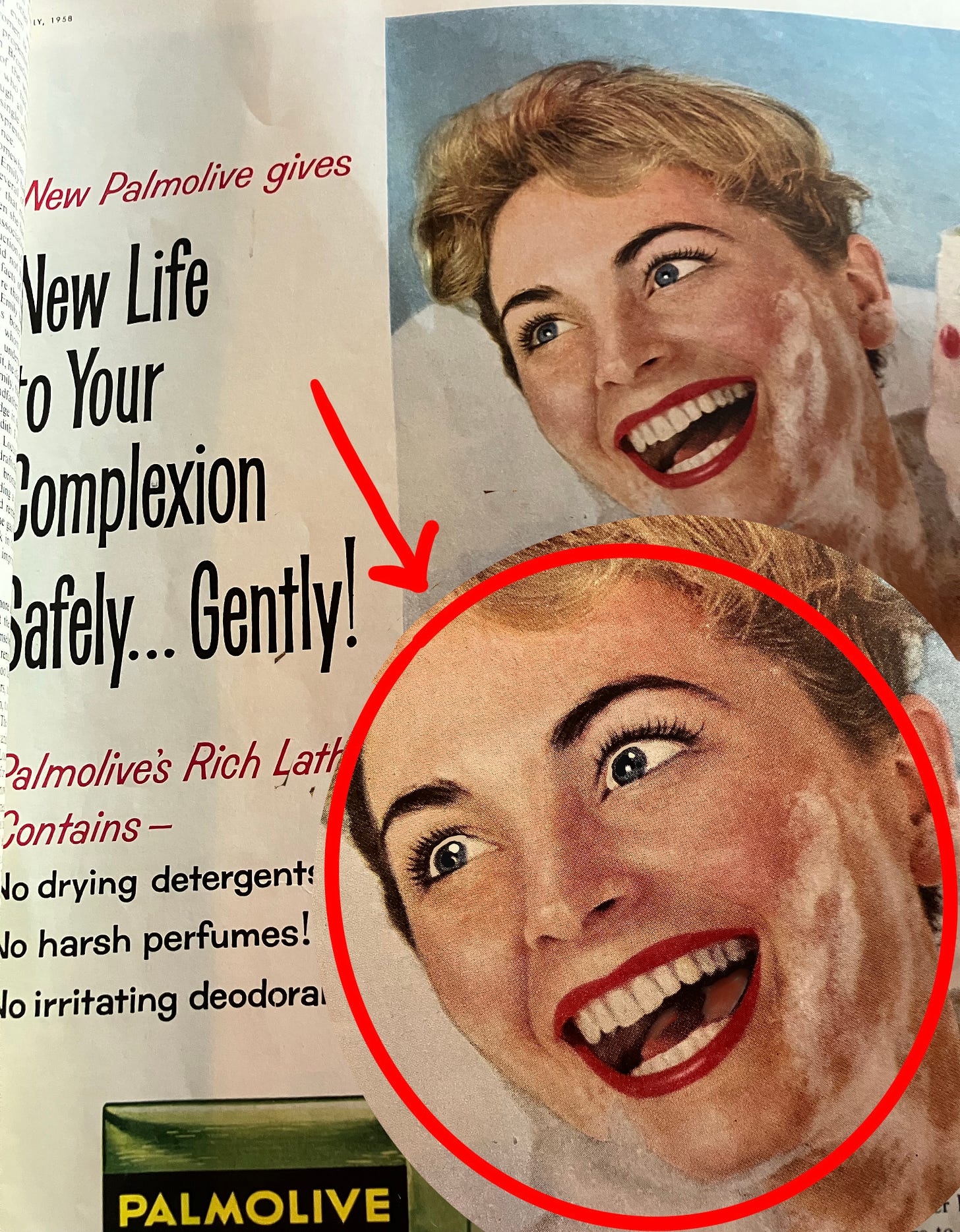
The ads in the women’s magazines were entirely different than the ones for men. Here is what LHJ was selling exclusively to ladies in those days.
I would feel remiss if I didn’t give THIS special product its own solo spotlight.
However, The Ladies Home Journal was never really the sister magazine to MALE so it’s not a fair comparison. A much closer parallel, sociologically speaking, was “True Confessions” (“Your Magazine for a Better Life.”) .

Here is an excerpt from one of these confessions.
One big way that MALE magazine was different from TRUE Confessions was 1) It never criticized the crazy, violent, adventurous men it featured in its stories. and 2) It was crammed full of dozens and dozens of ads for correspondence courses that could supposedly launch the male MALE readers into every conceivable profession.
The ladies of “TRUE CONFESSIONS” had only a couple options. 1) Try to become some form of “NURSE” (with no required “education.”!!)
And also these teensy-tiny little sorties into some kind of imaginary income supplementation selling Christmas cards or “sampling HOME PRODUCTS!(?)”
There are, however, FIVE separate ads in this one single issue begging for POEMS (because you know the ladies and their POEMS!) that recording professionals will set to music. Yes, there’s a fee. But come on! Don’t pass up a chance to strike it rich in the music business! (FYI: There is a great documentary on this, here. )
BTW: Why do I assume that the magazine is mainly for LADIES?
And although most of the stories and/or ads in ‘MALE’ and ‘TRUE’ magazine barely acknowledged the existence of women, (except in instances of accidental rape) it’s hard to find any corner of ‘TRUE CONFESSIONS’ that doesn’t mention men. Even corned beef hash.
Gee. I wonder if there is any kind of an interesting back-story or explanation for how things shook down this way? Glad you asked.
In the 1950’s, Betty Friedan was a young journalist looking for post graduate writing assignments.
Because she had grown up reading the women’s magazines of the 1930s and ‘40’s, she set out to pitch them story ideas that seemed in their wheelhouse for interesting reading. But much to her surprise, she found herself being turned away by the various editorial staffs because “Our readers are full time housewives and not interested in public issues or national/international affairs or politics. They are only interested in the family and home. Humor has to be gentle. No satire. Travel? We’ve dropped it.”
This confused Betty, who remembered that the women’s magazines of her youth offered all kinds of different content. So she got a hold of some back issues and found that the women at the center of the stories in these same popular women’s magazines, right up until the late 1940’s, were spirited career women who worked as nurses, teachers, artists, copywriters, and sales women. They had goals and visions for themselves beyond simple housekeeping. Why it was almost as though these women thought they were part of the human race!
I did a little research of my own on this and here is a full page ad from the front of FORTUNE magazine, in 1936.
HOWEVER, starting at the end of the 1940’s and into the 1950s, a whole different dialectic about a woman’s role in American culture swept thru the universe of women’s magazines. Articles about the world beyond the home were being systematically eliminated. And in their place, were articles with titles like “How to Keep Your Husband Happy” and “Femininity Begins at Home” and “Do Women Have to Talk So Much?” (Oh, those darn gals, with their crazy need to communicate!)
And then Betty happened upon another interesting detail that didn’t seem like a coincidence. Starting in the late 1940’s, the men of the armed forces returned home after WWII and re-entered the job market. And before too long, all the editorial positions at women’s magazines were suddenly occupied by men! And with this change, a new content approach to women’s magazines was born.
And so it came to pass that by 1958, one hundred percent (100%) of the women being written about in popular women’s magazines were women who rejected the idea of an outside career altogether. (100%!!) In fact, the only career that was even mentioned in passing, within the pages of these magazines, was ‘actress,’ with even the most serious of actresses being packaged as baby-faced sex objects who regretted the time that acting took away from their first priority; being a housewife. Case in point: this amazing excerpt from a 1957 REDBOOK article about Judy Holiday.
“…and so she must find fulfillment in her career because she is divorced from her husband. By continuing to pursue her career to the exclusion of a traditional family life, Ms. Holiday is forced to live with strong feelings of inadequacy as a woman….It is a frustrating irony of Judy’s life that as an actress she has succeeded almost without trying. But as a woman she has failed.”
All the popular women’s magazines were now selling the idea that the so-called problems of the modern woman were rooted in her “denial of her ‘true nature’ which yearned for “sexual passivity, male domination and maternal love.” A woman’s greatest fulfillment” they were all saying, “is through her husband.”
Perhaps you are now wondering where I got all this information. Well, I finally read Betty Friedan’s best-selling book of 1963: “The Feminine Mystique.,” which I avoided at the time because I was a child and my Bible, MAD magazine, used it as a comedy buzzword. But turns out the title was a reference to the images in ads Betty saw being marketed to women, which she felt were little more than “a set of reproductive organs in heels.”
Betty felt she was looking at “the earmarks of a cultural identity crisis”. (And many people took issue with this labeling of her theory because the whole idea of even having ‘an identity crisis’ was considered masculine!) After all, identity was a thing only men needed to have, they told her. In fact, ‘The Law of Coverture’*** (google it) wasn’t fully repealed until the sixties, so some of these women weren’t even legally ‘a person.’ And if you aren’t even a person, the last thing you need is to be lugging around an identity.**
**The Law of Coverture’ meant that when a woman married a man, she lost her independent rights to pretty much everything because her identity was now legally merged with his identity.
Betty saw a lot of proof that the rules around being a housewife at that time, (which were being described as “nature’s throne of privilege for women,”) were making women feel exhausted, crazy and suicidal. She also observed that the human life cycle makes room for ideological re-adjustments at different phases of development for men, because it is necessary to help them grow and function properly. Society right then seemed to have never gotten the memo that human women were part of the human life cycle.
“It is my thesis,” said Betty, “that our culture does not permit women to accept or gratify their basic need to grow and fulfill their potential as human beings…This is a need not simply defined by their sexual role. We can no longer ignore that voice within women that says ““I love my kids. I love my husband. But I feel desperate. I’m a server of food and a maker of beds but who am I? I just don’t feel alive. I want something more than simply my husband, my children and my home.” She labeled these common complaints she was hearing from the women she interviewed as ‘Housewife’s syndrome’.
So this is the origin story, in part, for what America was like for the ladies when it was great again that other time. It was a time when a woman couldn’t get a credit card unless her husband was a co-signer. Help Wanted’ ads were still allowed to exclude women from applying for certain jobs. Newspapers had a special ‘Women’s Section’ that was almost exclusively articles about home-making topics. And it was the beginning of a class of pills prescribed by doctors as a coping remedy for female frustration, moodiness and dissatisfaction that started The Sackler family and Perdue Pharma on the road to their billion dollar oxycontin empire.
My very, very angry and depressed mother never went anywhere without her valium and her librium, thanks to Arthur Sackler.
Anyway….please keep this in mind when those new masculine energy promoters guys start pushing how great its going to be to go back to those days when America was great again that other time.
Either that or I guess there’s this alternative: Ladies, START SUDSING.
PS: If you’re interested in this stuff, I did an audiobook with my occasional partner, the writer, comedian and substackier, Ms.Megan Koester, where we traced it throughout history. It is called THE INDIGNITIES OF BEING A WOMAN. You can get it free, here!




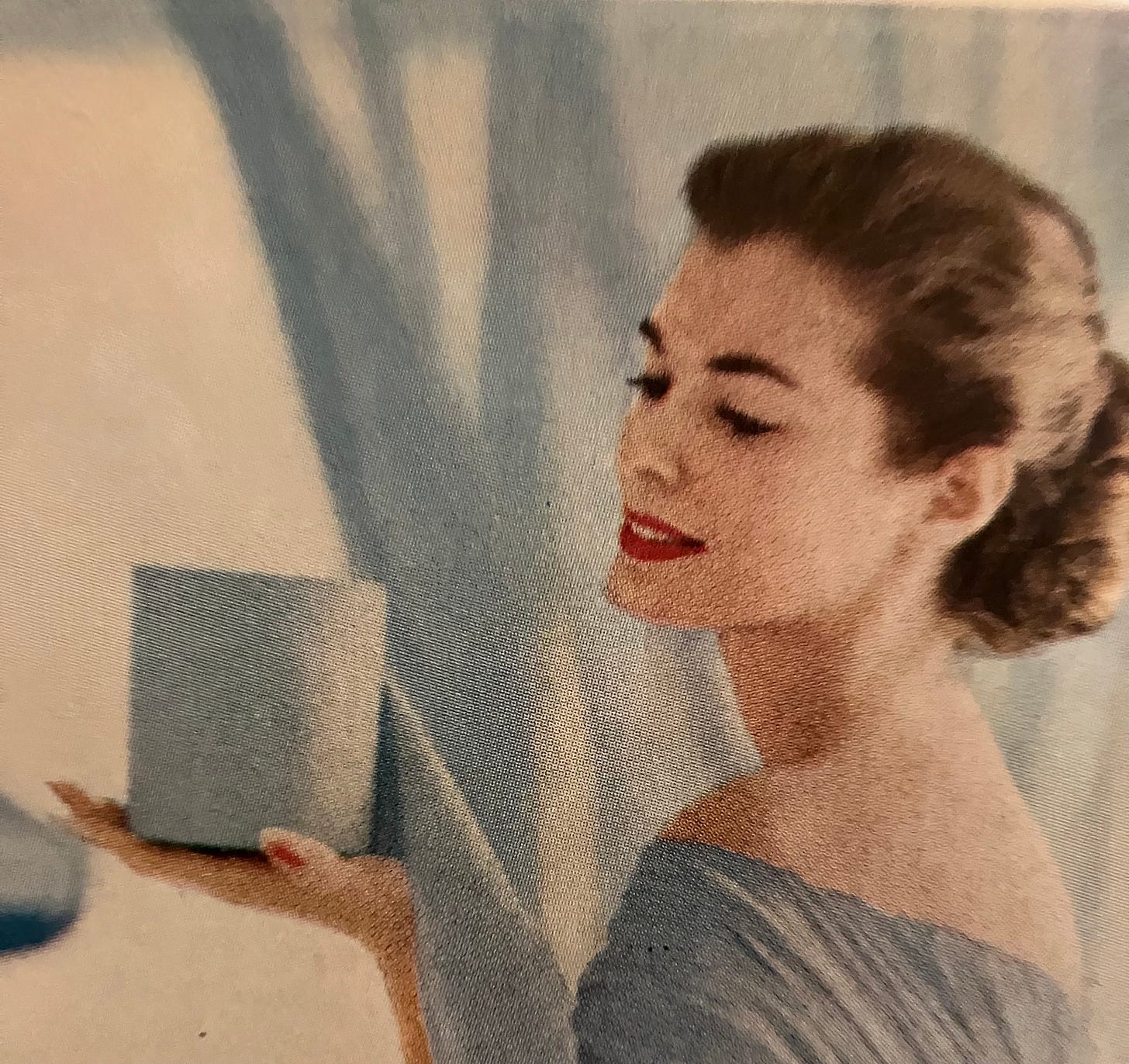
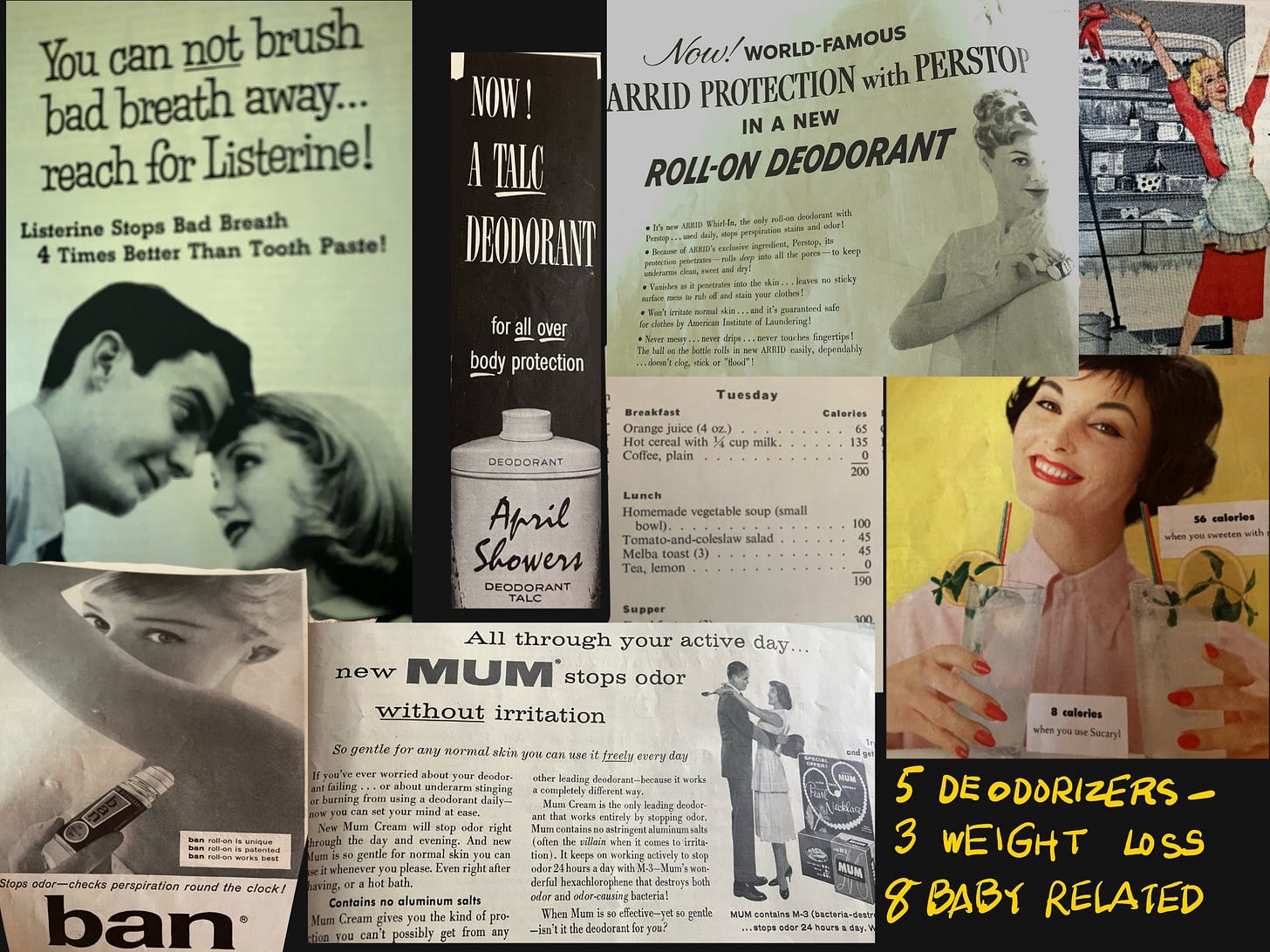
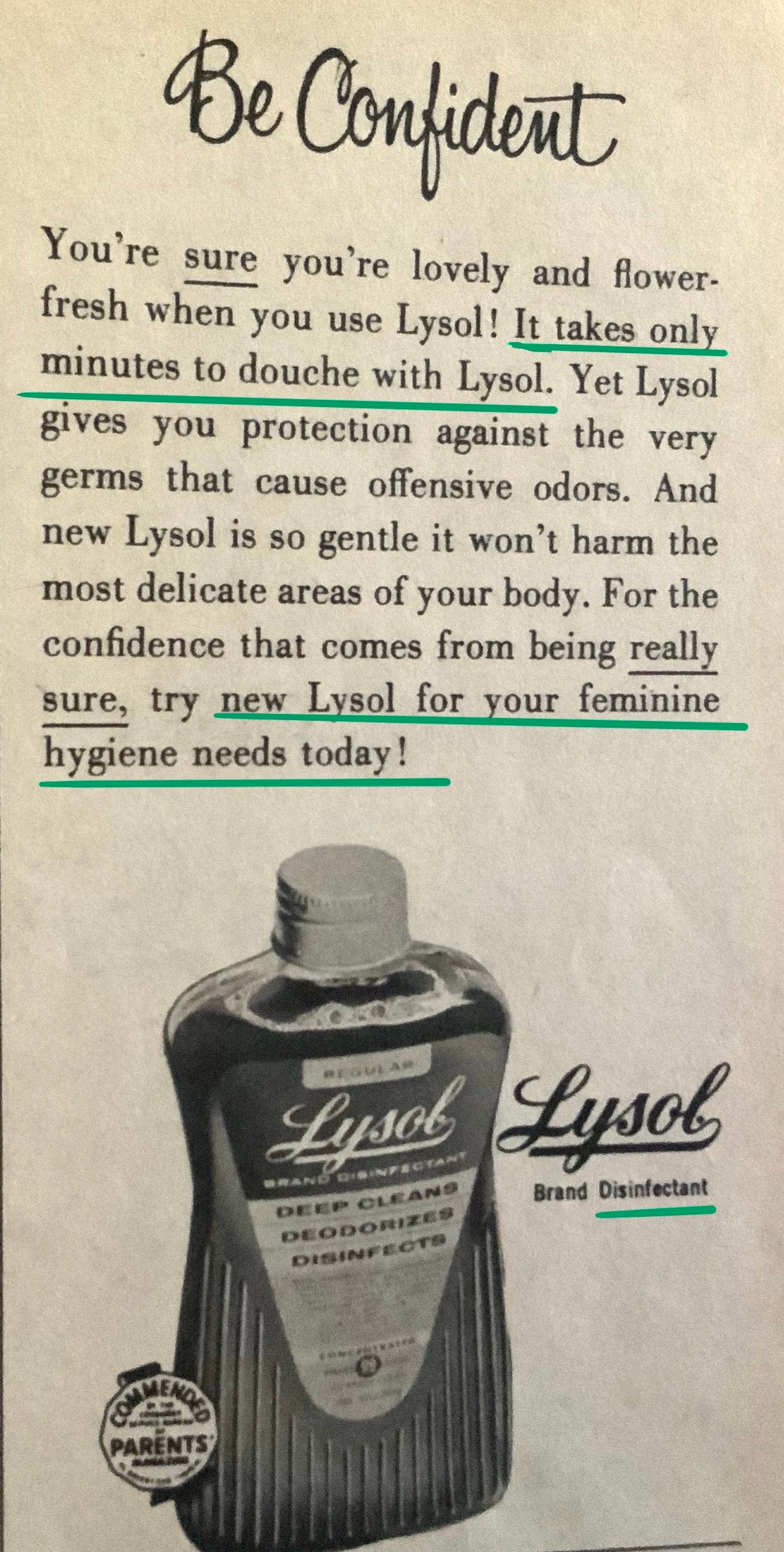
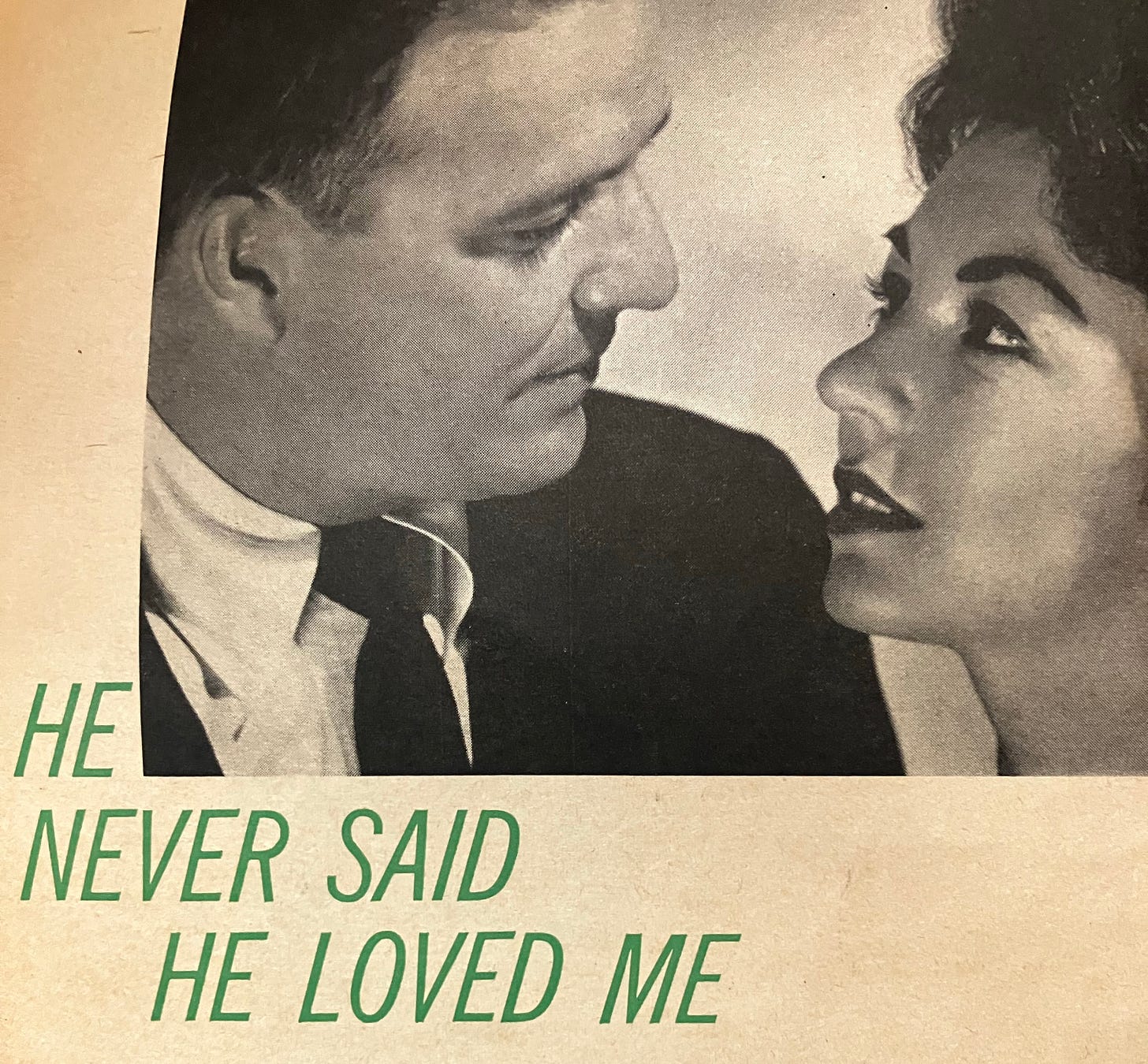

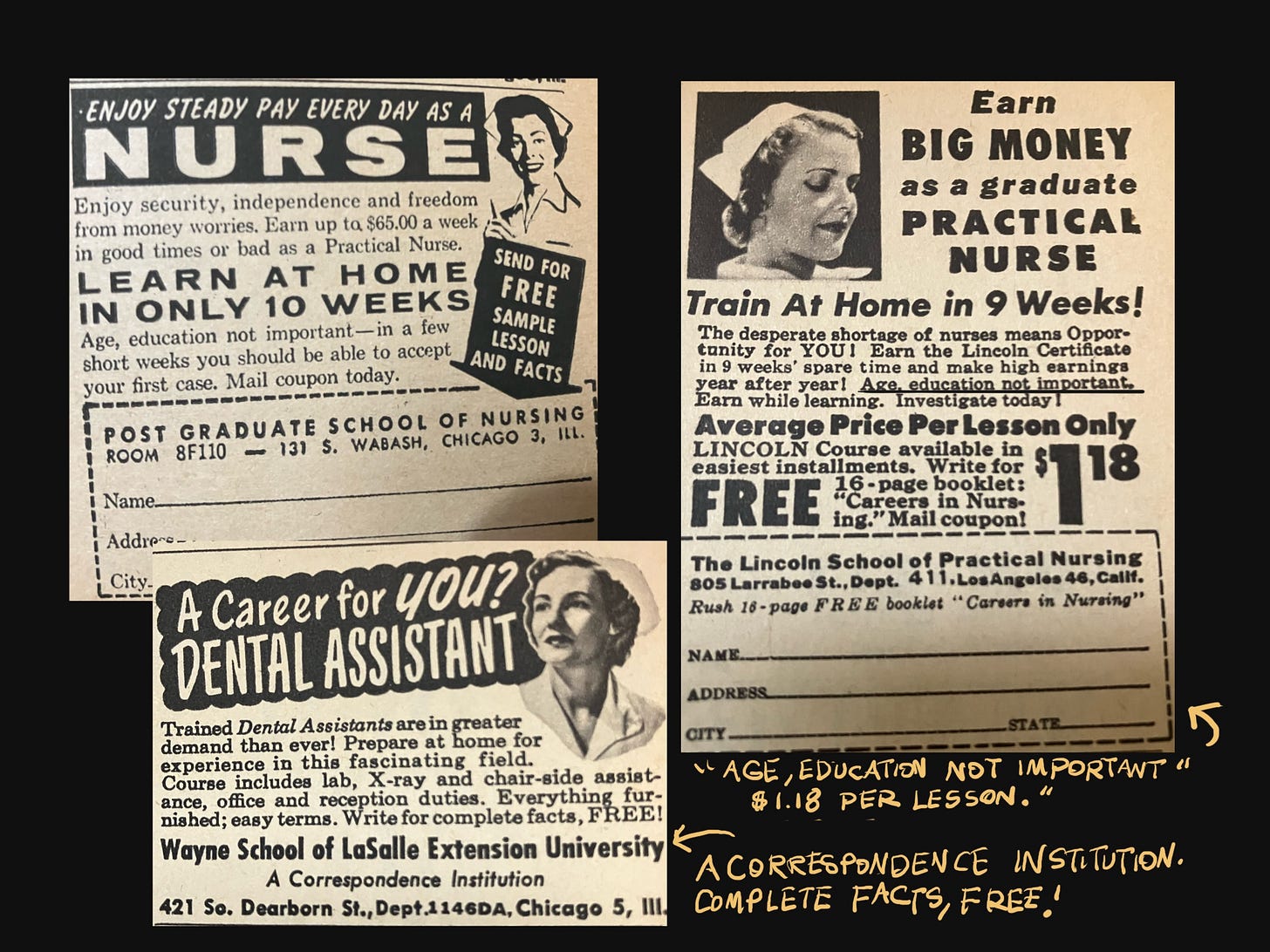
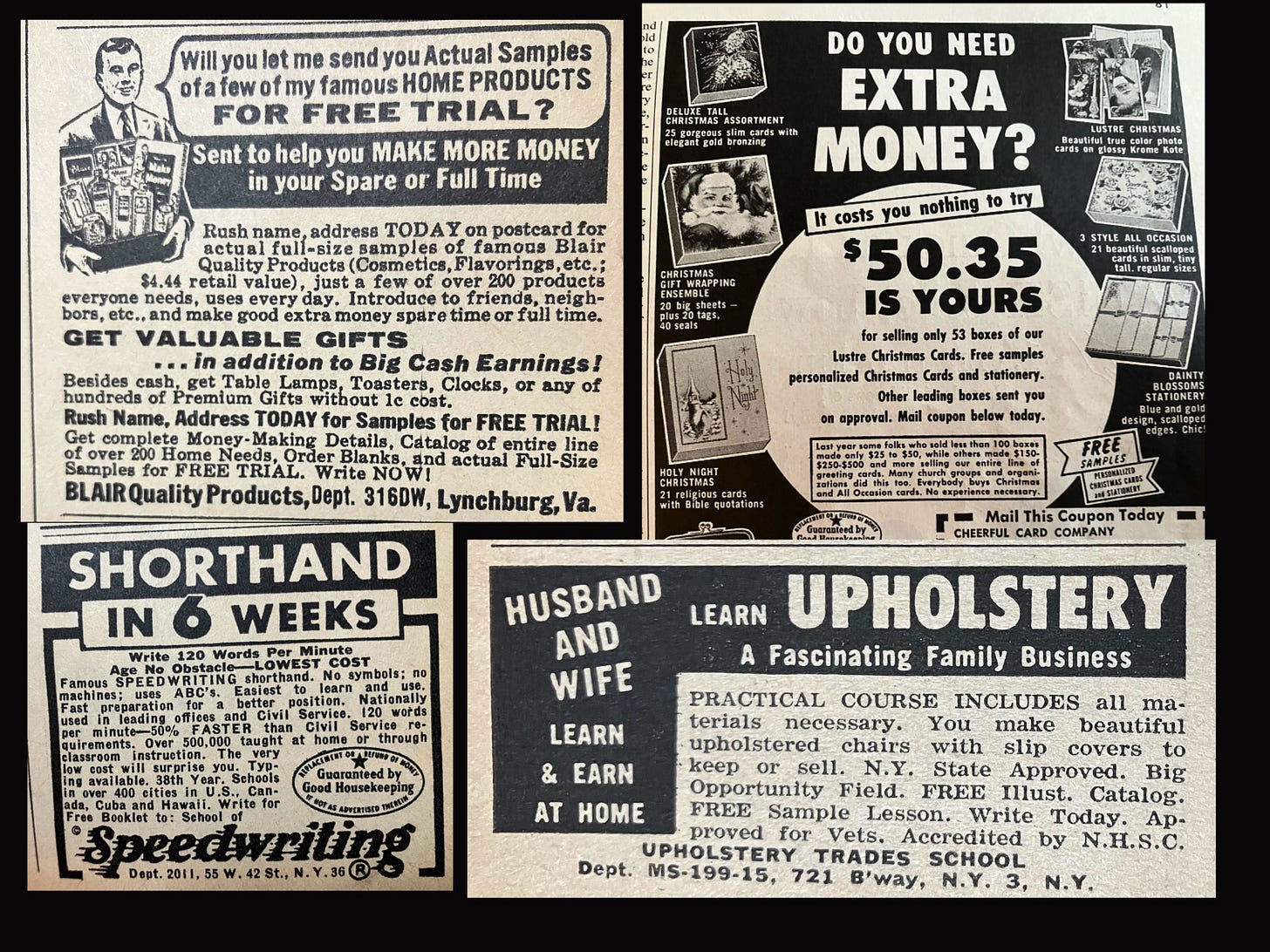
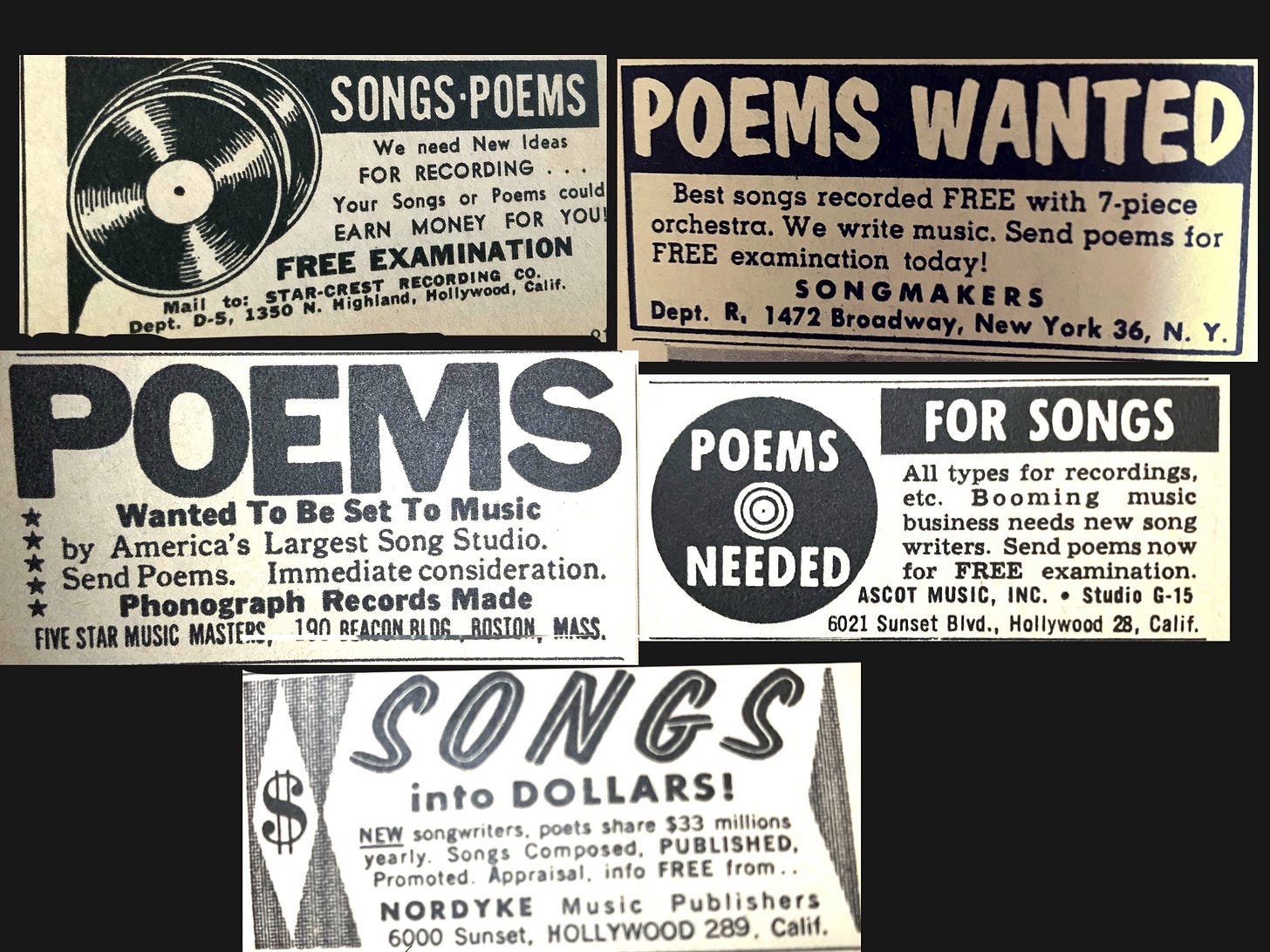

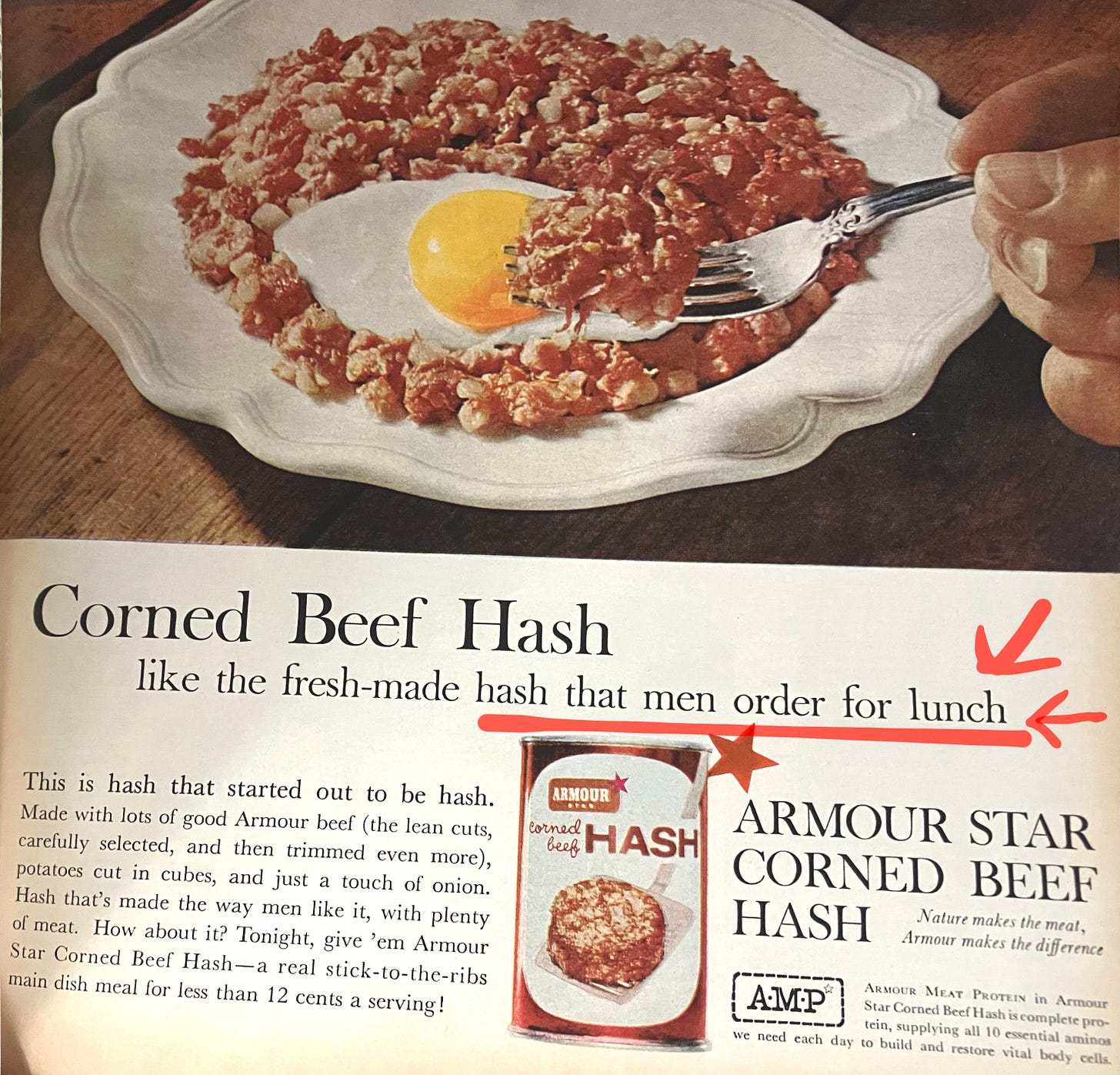
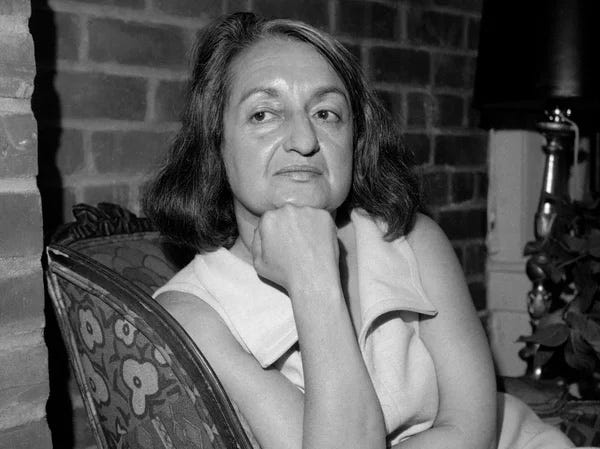
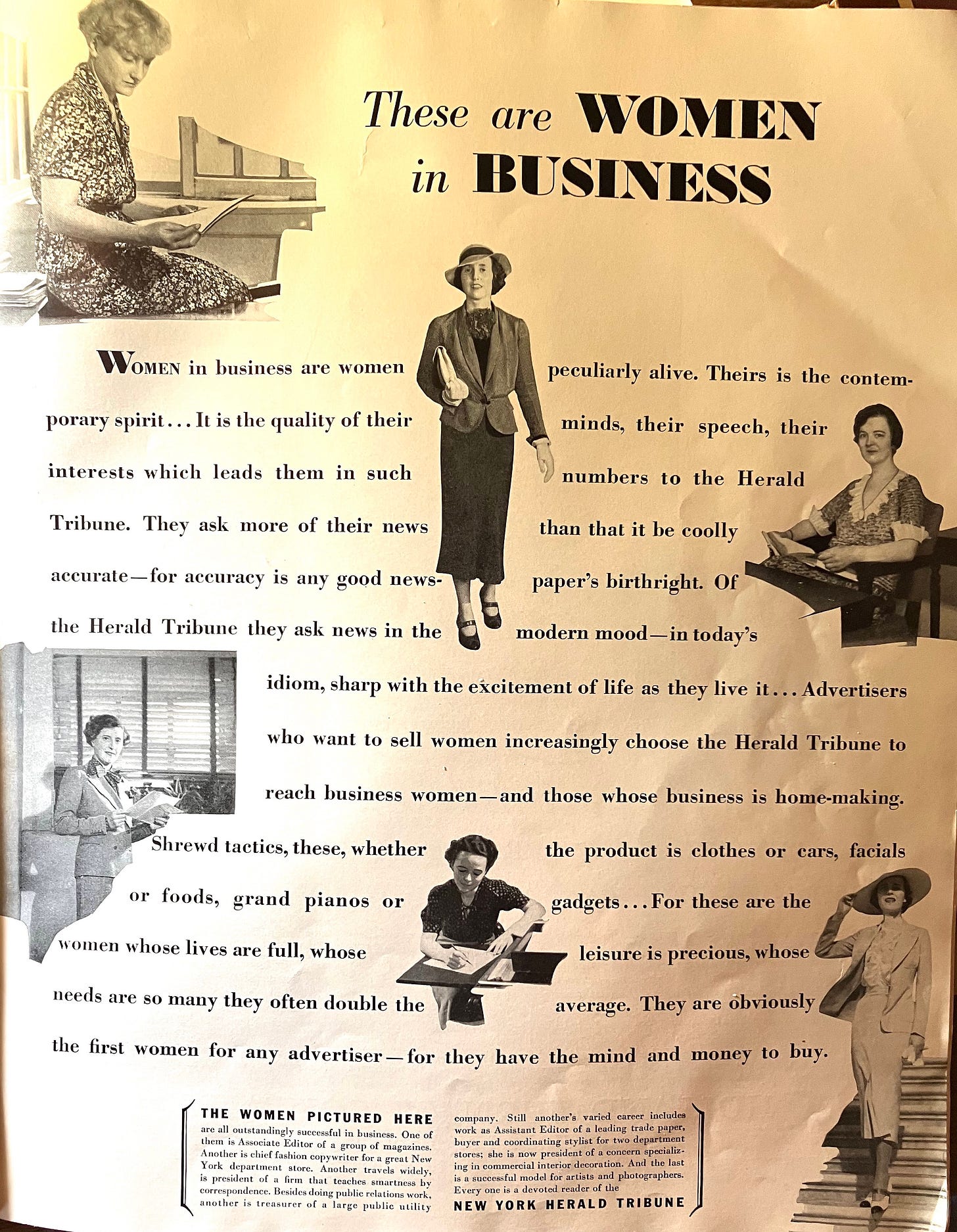


This is yet another brilliant piece from the pen of La Markoe! I was actually getting queasy as I scrolled through the images you shared--my mother, divorced and cast aside by family and friends as "mentally ill" in the '60s (she was mostly just really angry after four kids and quashed teaching career), subscribed to LHJ, and I spent many a troubling hour with it during my formative years while mom chain-smoked in her bedroom. I also came late to Betty Friedan's Feminine Mystique, not reading it until I was researching my memoir about my mother, Compromise Cake: Lessons Learned From My Mother's Recipe Box, in the teens of this young century. When I was in college in the early 70s, just as the feminist movement was heating up, I thought why bother reading it, all that stuff was taken care of back in the '60s, when the book came out. Yeah, right. And I was conditioned to the reality that I couldn't get a credit card at the time without a co-signer and that men were to be put first in one's limited, constrained life. I'll stop there, but must add: the suds photo is T-Shirt and coffee mug worthy. We want merch Ms. Markoe!
I've just learned that I'm a 'so-and-so'. Never knew any of these these magazines excisted until now. Thanks Merrill!